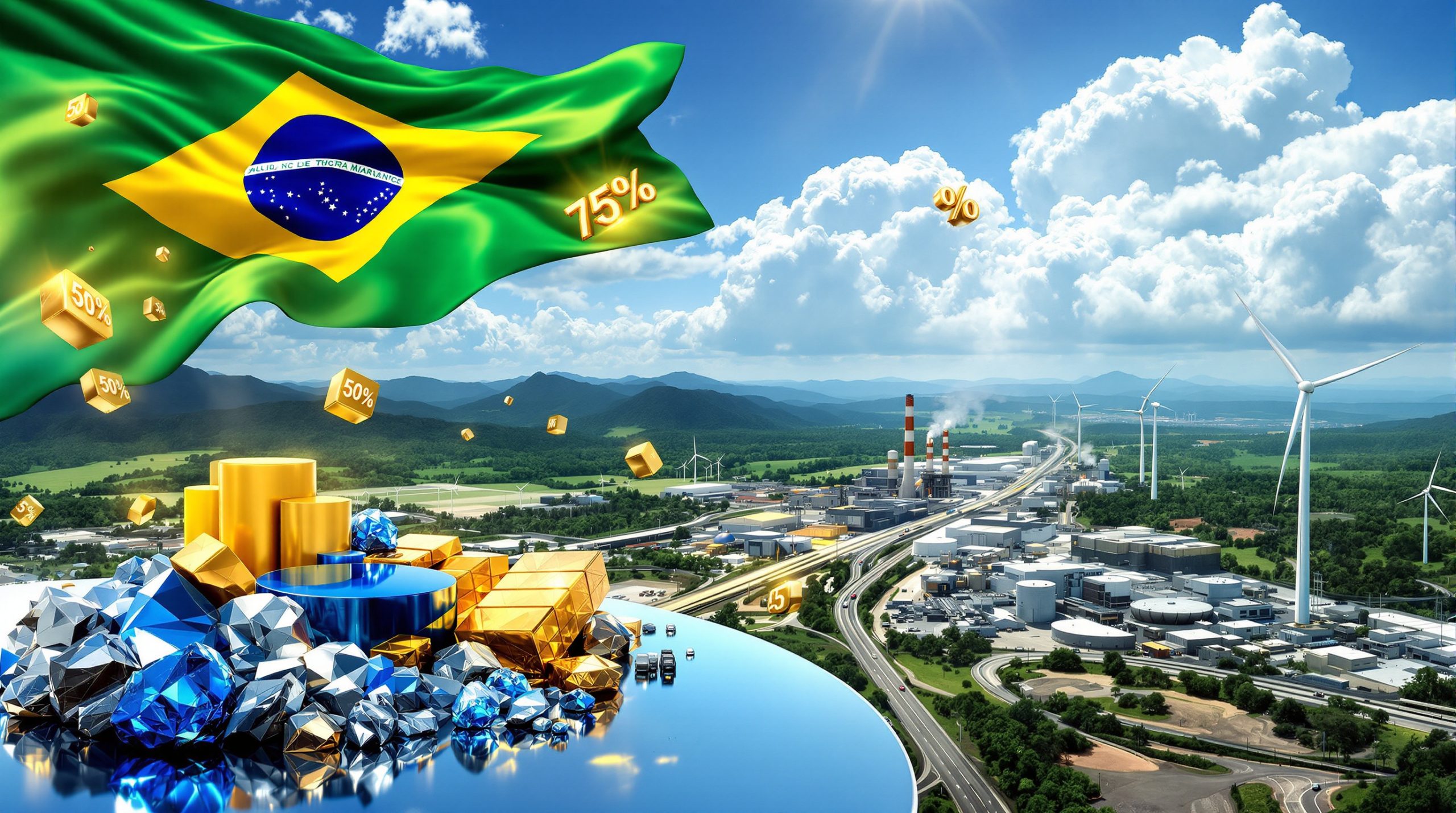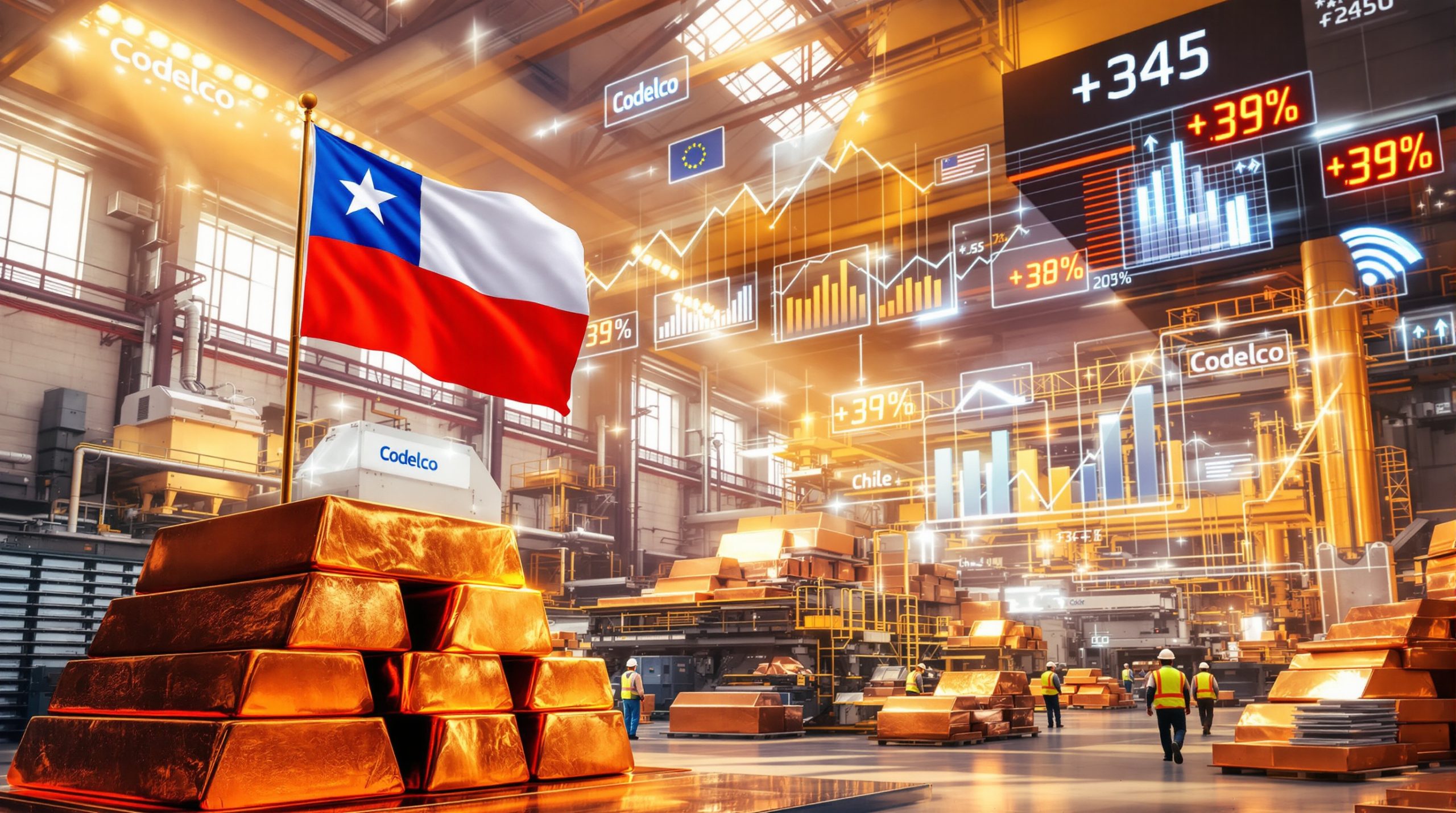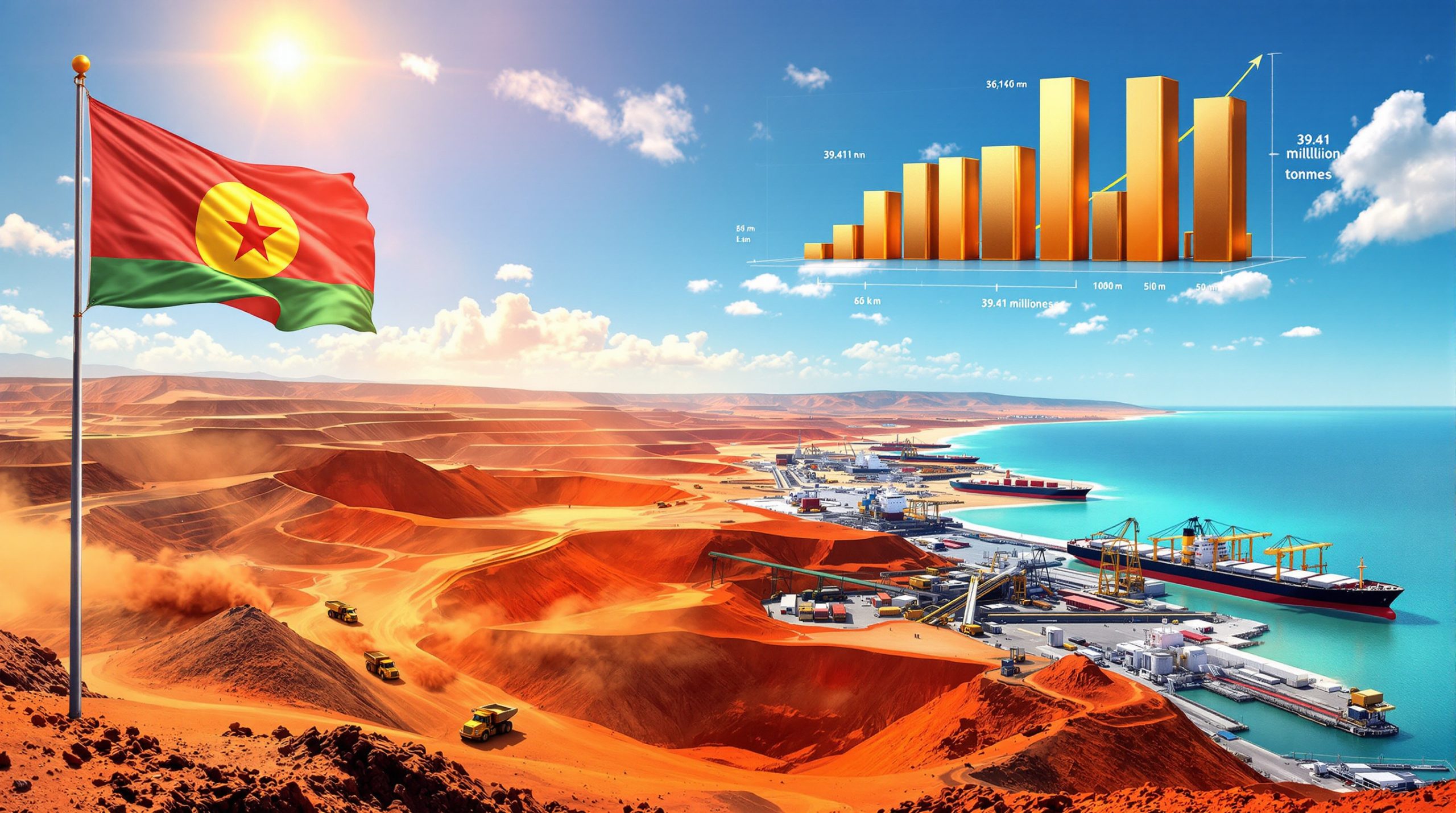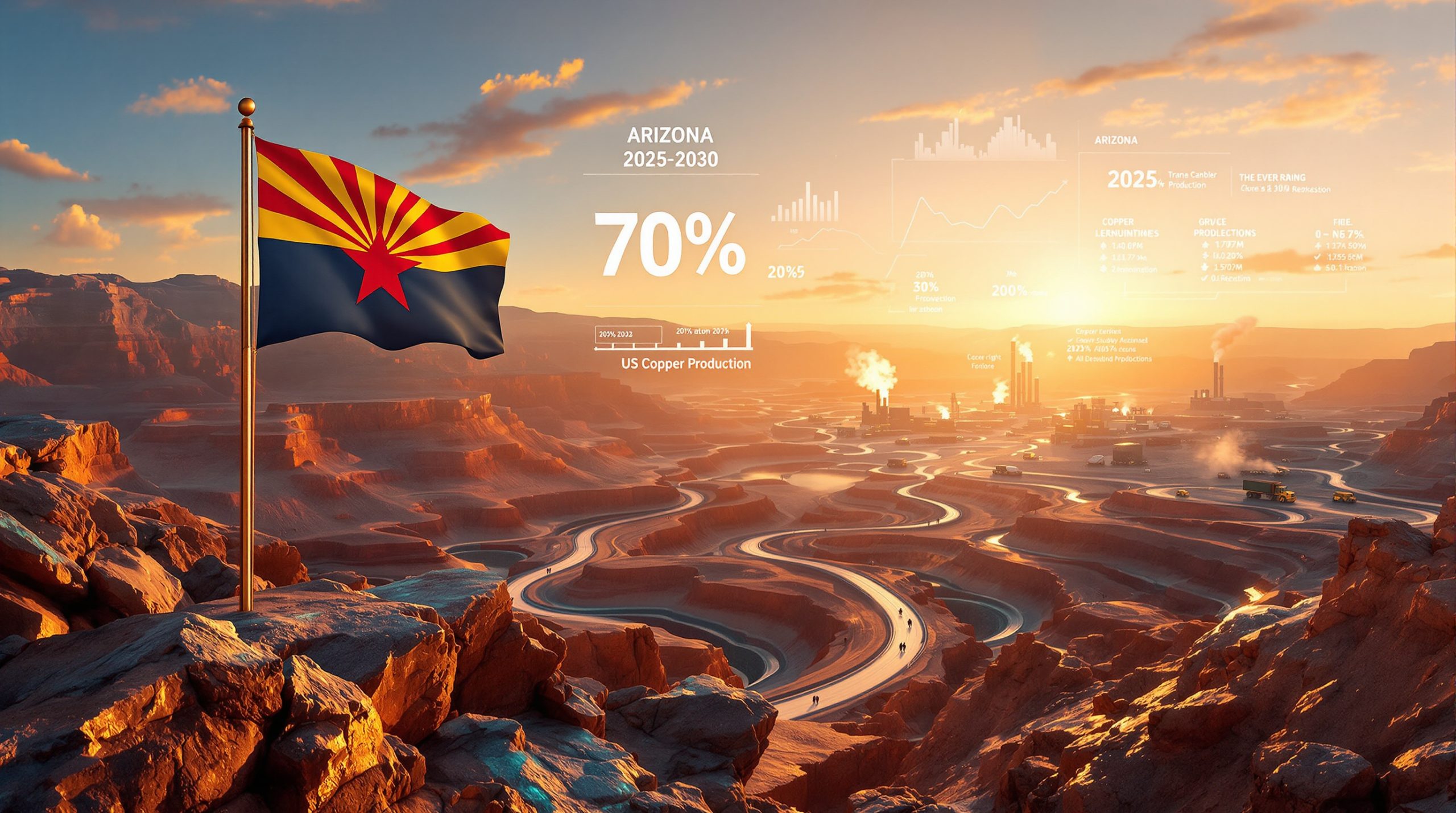What Are the 5D Forces Driving the New Commodity Super Cycle?
The global commodity market is experiencing a transformative shift unlike anything seen in decades. Investors and analysts alike are recognizing we've entered what many Wall Street institutions—including Goldman Sachs, JP Morgan, and Bank of America—have termed the "golden age of trading" for commodities. This new era is being shaped by five distinct structural forces that are fundamentally altering how commodities are produced, traded, and valued.
Understanding the Macro Super Cycle in Commodities
The commodity super cycle currently unfolding is driven by what market analysts have identified as the "5D forces"—a convergence of five major global shifts creating unprecedented opportunities in commodity markets:
Deglobalization: The fragmentation of global supply chains is reshaping commodity production and distribution networks. Nations are prioritizing domestic resource security, leading to trade barriers and localized supply chains that significantly impact commodity pricing and availability.
Decarbonization: The global push toward renewable energy and carbon reduction is creating explosive demand for industrial metals. Copper, in particular, has become the cornerstone of this transition, with electric vehicles requiring up to four times more copper than traditional combustion engines.
Defense Spending: Military modernization programs worldwide are accelerating consumption of strategic metals. Advanced weapons systems, communication networks, and defense materials strategy all require substantial quantities of industrial metals, creating a sustained demand floor regardless of economic conditions.
De-dollarization: The gradual shift away from USD dominance in international trade is changing how commodities are priced and settled. Several major economies are establishing alternative payment mechanisms for commodity transactions, introducing new pricing dynamics and volatility.
Demographics: Shifting population patterns—particularly urbanization in developing nations—continue to drive long-term commodity demand. Infrastructure development requirements in countries with growing middle classes create sustained demand for industrial metals and construction materials.
Why Commodity Trading Has Entered a "Golden Age"
The confluence of these 5D forces has created a market environment that favors active trading over passive investment approaches. Market data indicates that approximately one in three investors have now incorporated commodities into their trading strategy, a significant increase from previous market cycles.
"We're witnessing the most asymmetrical opportunity in commodities since the early 2000s. The difference is that today's environment favors active traders over buy-and-hold investors." — JP Morgan Commodities Research
The increased volatility is creating substantial tactical opportunities for traders. Take the recent movement in WTI crude oil, which surged from $64 to $69 per barrel in a single week—a 7.8% move that exemplifies the kind of price action attracting traders to the commodity space.
What makes this cycle unique is the combination of:
- Structural supply constraints across multiple commodities simultaneously
- Policy-driven demand increases from government initiatives
- Geopolitical premium added to strategic resources
- Inflationary pressures affecting commodity pricing
- Technological demand shifts creating new consumption patterns
This convergence of factors has transformed commodities from a sleepy asset class to the center of global financial attention, with many institutional investors increasing their allocations to capitalize on these multi-year trends.
How Are Trump's Tariffs Reshaping the Copper Market?
The copper market experienced a seismic shift when former President Trump announced a 50% tariff on copper imports, effective August 1, 2025. This dramatic policy move sent ripples through global commodity markets and triggered what analysts are calling a fundamental recalibration of copper's strategic importance.
The 50% Copper Tariff Announcement and Market Impact
When the tariff announcement hit markets, copper prices surged to nearly $6 per pound—a record high representing the most dramatic one-day rally since 1989. The 20% price breakout following the announcement underscored both the market's sensitivity to policy changes and copper's increasingly strategic role in the global economy.
Trump justified the tariff by stating: "This is our golden age. We will rebuild a dominant copper industry." This policy stance represents a significant shift in America's approach to critical minerals and strategic metals.
Historical copper price data puts this move in perspective:
| Period | Price Range | Key Drivers |
|---|---|---|
| 1989-2000 | $0.60-$1.40 | Industrial demand fluctuations |
| 2000-2010 | $0.85-$4.00 | China's infrastructure boom |
| 2010-2020 | $2.00-$4.50 | Tech revolution & EV adoption |
| 2020-2025 | $2.80-$6.00 | 5D forces & tariff announcement |
This price trajectory illustrates how copper has transformed from an industrial commodity to a strategic asset at the center of technological development, defense capabilities, and economic security.
Copper's Critical Role in Strategic Industries
The tariff policy recognizes copper's irreplaceable role in several critical industries that will define economic and military dominance in the coming decades:
AI Infrastructure: Each hyperscale data center consumes up to 30,000 tons of copper—an astonishing figure that highlights the metal's importance to digital infrastructure. With hundreds of these facilities planned globally, copper demand from this sector alone is projected to grow exponentially.
Defense Applications: Modern defense systems rely heavily on copper for everything from communication networks to advanced weapons platforms. A single F-35 fighter jet contains approximately 9,000 pounds of copper, while naval vessels require even more substantial quantities.
Semiconductor Manufacturing: The semiconductor industry's copper consumption has increased by 27% since 2020, driven by more complex chip designs and increased transistor density. Advanced chips now utilize up to 12 layers of copper interconnects.
Electric Vehicles: The transition to electric mobility is dramatically increasing copper intensity in transportation. Consider these requirements:
- Conventional vehicle: 18-49 pounds of copper
- Hybrid electric vehicle: 85-132 pounds of copper
- Battery electric vehicle: 183-315 pounds of copper
- Electric bus: Up to 814 pounds of copper
Renewable Energy: Solar and wind installations are significantly more copper-intensive than traditional power generation:
- Solar photovoltaic: 5.5 tons per megawatt
- Wind power: 3.6 tons per megawatt
- Conventional power: 1 ton per megawatt
These applications highlight why copper has become a focal point of industrial policy and strategic planning. The metal's unique properties—high conductivity, corrosion resistance, ductility, and antimicrobial characteristics—make it essentially irreplaceable in many of these critical applications.
What Is Driving the Structural Deficit in Copper Supply?
Beyond tariff impact on mining, the copper market faces a fundamental supply-demand imbalance that threatens to persist for years. This structural deficit stems from both concentrated production sources and exploding demand from next-generation technologies.
Global Supply Concentration and Geopolitical Risks
The global copper supply chain reveals concerning vulnerabilities that compound the impact of tariff policies:
Refining Concentration: China controls approximately 45% of global copper refining capacity, creating a bottleneck in the production of finished copper products. This concentration gives China significant leverage over global supply and pricing.
Mining Geographic Concentration: Nearly half of all copper mine output comes from just three countries—China, Peru, and the Democratic Republic of Congo. This geographic concentration introduces significant geopolitical risk to global supply.
| Country | % of Global Mining | Key Risk Factors |
|---|---|---|
| Chile | 28% | Water scarcity, labor strikes, declining ore grades |
| Peru | 12% | Political instability, community opposition |
| DRC | 8% | Political instability, infrastructure challenges |
| China | 8% | Environmental regulations, resource depletion |
| USA | 7% | Permitting delays, environmental regulations |
Resource Nationalism: A growing trend of governments asserting greater control over natural resources is affecting investment and production. Countries like Chile and Peru have implemented or proposed higher royalties and taxes on mining operations, potentially constraining future supply growth.
Declining Ore Grades: The average copper content in mined ore has fallen from above 2% in the 1980s to below 0.7% today. This decline means more material must be processed to produce the same amount of copper, increasing production costs and environmental impacts.
"The combination of concentrated supply, declining ore grades, and increasing government intervention creates a perfect storm for copper supply constraints just as demand is accelerating." — International Copper Study Group
The $1.8 Trillion AI Infrastructure Investment
While supply faces numerous constraints, demand is set to accelerate dramatically due to technological shifts and strategic investments:
Global AI Investment: Projections indicate approximately $1.8 trillion in global AI infrastructure investments by 2030. Each component of this infrastructure—from data centers to power systems—requires substantial quantities of copper.
US-Gulf Nations AI Pact: A $3 trillion AI infrastructure partnership between the US and Gulf nations (Saudi Arabia, UAE, Qatar) represents one of the largest coordinated technology investments in history. This initiative alone will drive significant copper demand.
Data Center Expansion: Each hyperscale data center requires up to 30,000 tons of copper—equivalent to the annual production of a medium-sized copper mine. With hundreds of these facilities planned globally, the demand implications are enormous.
The AI revolution's copper requirements can be broken down into several components:
- Server farms and data centers: Cooling systems, power distribution, and internal wiring
- Power infrastructure: Renewable energy systems and grid expansion to support energy-intensive AI operations
- Chip fabrication: Advanced semiconductor manufacturing for AI processors
- Robotic systems: Automation infrastructure supporting AI deployment
The result is a widening gap between copper supply and demand that market forces alone may struggle to resolve, especially with tariff policies further segmenting the global market.
Will Copper Prices Impact Inflation and Monetary Policy?
The surge in copper prices has implications far beyond the metal markets themselves, potentially influencing broader economic conditions and central bank policies.
Copper as an Inflation Indicator
JP Morgan analysts have described copper as "the new CPI," highlighting the metal's unique position as an inflation barometer. This characterization stems from copper's ubiquity across virtually all sectors of the modern economy:
Housing and Construction: Copper represents 4-8% of construction costs for residential buildings through wiring, plumbing, and HVAC systems. Price increases flow directly into housing costs.
Transportation: Beyond EVs, conventional vehicles and public transportation systems rely heavily on copper. Price increases affect manufacturing and maintenance costs across all transportation modes.
Energy Infrastructure: Electricity generation, transmission, and distribution all require substantial copper inputs. Higher copper prices translate to increased energy costs throughout the economy.
Electronics and Consumer Goods: From smartphones to appliances, copper is essential for electronic devices that permeate modern life. Price increases eventually reach consumers through higher retail prices.
This wide-ranging impact makes copper price movements a leading indicator of broader inflation trends. When copper prices rise significantly, as they have following the tariff announcement, the inflationary effects ripple throughout the economy with a 6-12 month lag.
Potential Spillover Effects on Other Industrial Metals
The copper tariffs and trade opportunities have highlighted vulnerabilities in industrial metal supply chains more broadly, potentially triggering similar dynamics in related metals:
Platinum Group Metals (PGMs): Critical for catalytic converters, fuel cells, and industrial catalysts. Supply is highly concentrated in South Africa and Russia, creating geopolitical vulnerability.
Silver: Essential for solar panels, electronics, and medical applications. The metal faces supply constraints as many silver mines operate as byproducts of other metal mining operations.
Lithium: The cornerstone of battery technology faces rapid demand growth from EV production. Current production is concentrated in Australia, Chile, and China, raising supply security concerns.
| Metal | Strategic Applications | Supply Constraints | Price Projection Potential |
|---|---|---|---|
| Copper | AI, EVs, power grid | Concentrated refining, declining grades | Continued strength with volatility |
| Platinum | Fuel cells, catalysts | 75% from South Africa | Potential breakout on supply disruption |
| Silver | Solar, electronics | Byproduct production limitations | Gradual appreciation with industrial demand |
| Lithium | Batteries, ceramics | Processing concentration in China | Periodic supply-demand mismatches |
The parallels between these metals suggest that the copper tariff could be a template for broader industrial metal policies, especially for those deemed strategically important.
If these industrial metals experience similar price trajectories to copper, central banks may face a challenging environment where commodity-driven inflation persists even as other economic indicators suggest monetary easing.
What Trading Strategies Are Effective in the Current Commodity Environment?
The new commodity landscape characterized by heightened volatility and structural changes demands different approaches than previous market cycles. Traditional investment strategies may underperform compared to more tactical approaches.
Tactical Approaches to Volatile Commodity Markets
The current environment favors active management over passive buy-and-hold strategies for several reasons:
Increased Volatility: Price swings of 5-10% within days or weeks have become common across commodity markets. This volatility creates opportunities for tactical entries and exits rather than long-term positions.
Policy-Driven Moves: Government actions like tariffs, strategic stockpiling, and export restrictions can cause rapid price dislocations that require nimble positioning.
Divergence Between Commodities: While the broader super cycle affects most commodities, individual markets are experiencing different timing and magnitude of price movements. This divergence creates opportunities for relative value trades.
Effective position sizing has become crucial in this environment. The optimal approach includes:
- Smaller initial positions with defined risk parameters
- Scaling in on confirmation of trend direction
- Partial profit-taking at technical resistance levels
- Trailing stops to protect gains while allowing for further upside
"In today's commodity markets, your first position should rarely be your full position. The volatility demands a more incremental approach." — Commodity Trading Advisor quoted in Financial Times
Identifying Asymmetrical Opportunities in Industrial Metals
The most attractive trading opportunities often display asymmetrical risk-reward profiles, where potential gains significantly outweigh defined risks. In industrial metals, these opportunities typically arise from:
Supply Disruption Risks: Identifying metals with concentrated production vulnerable to disruption (strikes, political instability, weather events) can reveal asymmetrical trade setups.
Technical Breakouts from Consolidation: Metals that have traded in ranges for extended periods before breaking out on fundamental catalysts often experience sustained directional moves.
Intermarket Analysis: Relationships between metals can provide early signals of emerging trends. For example, copper/gold ratios often lead broader industrial metal moves.
Futures Curve Structure Changes: Shifts from contango to backwardation (or vice versa) in the futures curve can signal important changes in supply-demand dynamics before they fully manifest in spot prices.
A framework for evaluating these opportunities includes:
- Fundamental supply constraint assessment: How tight is current supply? What is the production capacity utilization?
- Demand growth projection: Is demand growth structural or cyclical? How elastic is demand to price changes?
- Technical pattern identification: Is the metal breaking out of a long-term range or pattern?
- Sentiment analysis: Is market positioning crowded or is the opportunity still under-recognized?
This systematic approach allows traders to identify the most compelling opportunities across the industrial metals complex while maintaining appropriate risk management.
FAQ About Copper Tariffs and Trading Opportunities
How will the 50% copper tariff affect domestic US manufacturing?
The tariff's impact on US manufacturing will be mixed and sector-dependent:
Short-term challenges: Manufacturers using copper inputs will face immediate cost pressures as domestic prices rise to reflect the tariff. Industries particularly affected include electrical equipment, HVAC, plumbing, and electronics manufacturing.
Supply chain adjustments: Manufacturers will likely accelerate three strategies:
- Sourcing from domestic suppliers where possible
- Passing costs through to customers where market position allows
- Redesigning products to optimize copper usage
Domestic production incentives: The tariff creates strong incentives for expanding US copper production and refining capacity, but this response will take 3-5 years to materialize given permitting and construction timelines.
Historical precedent: The 2018 steel and aluminum tariffs provide some insight—they initially increased input costs but eventually stimulated domestic production. However, copper's supply constraints are more severe than those metals faced.
Adaptation timeline: Most manufacturers will require 12-24 months to fully adapt their supply chains and pricing strategies to the new tariff environment.
What are the potential retaliatory measures from copper-exporting countries?
Major copper exporters have several potential response options:
Targeted counter-tariffs: Countries like Chile and Peru could implement retaliatory tariffs on US exports, potentially targeting agricultural products or specialized manufacturing.
Export restrictions: Producer countries could restrict copper exports or implement export taxes to maintain leverage over global supply.
Strategic partnerships: Major producers might form deeper partnerships with China or other industrial powers to secure long-term demand and investment.
WTO challenges: Formal trade dispute proceedings could be initiated, though these typically take years to resolve.
Mining investment environments: Producer countries might adjust their mining regulations and tax structures to attract investment and expand production capacity.
The most likely scenario involves a combination of diplomatic negotiations, targeted counter-measures, and strategic realignments rather than a single response strategy.
How might copper price increases affect
Tired of Missing the Next Major Mining Discovery?
Discover how the 5D forces affecting commodity markets could impact your investments by exploring real-time insights at Discovery Alert's discoveries page, where our proprietary Discovery IQ model identifies significant ASX mineral discoveries before the broader market, giving subscribers a decisive advantage in capitalising on these opportunities.




